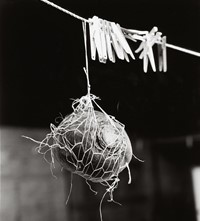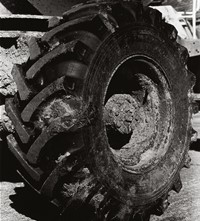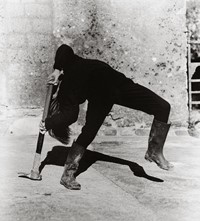People of the Mud, a new photography book by Luis Alberto Rodriguez, brings together powerful photographs of Irish hurling players, dancers and farmers
- TextBelle Hutton
When Luis Alberto Rodriguez arrived in County Wexford for a two-month photography residency, he admits that he knew very little about Ireland and its history and culture. The New York-born, Berlin-based photographer had been selected for the residency by PhotoIreland Festival from the Futures Photography programme, tasked with creating a body of work exploring Irish cultural heritage. For a self-described “city person” – who, as a professional dancer for 14 years, travelled the world with dance companies – the prospect of rural Ireland was somewhat daunting, but Rodriguez researched the country and met Wexford locals who would become his subjects for the resulting series, People of the Mud.
Rodriguez describes the series – which was exhibited in Dublin last year and has just been published by Loose Joints – as “a sort of portrait of my experience in Ireland”. “I’ve been a dancer most of my life – photography for me is like chapter two, in a way – so I definitely wanted to work with people and physicality,” he says. People of the Mud is an ode to a community that he found “extremely welcoming and warm”. Rodriguez took portraits of hurling players – the historic Irish game is “like a religion” to its players in Wexford – and extravagantly costumed Irish dancers, as well as people who worked at the farm he was staying at, the tools they used and the produce they grew.
His initial idea was this mass of bodies being one big Irish family, gathered for a large-format family portrait. “I wanted to see how I could make something that feels very traditional and focuses on family and the closeness and intimacy between them,” he says. “I thought it would be amazing to have a kind of classical family portrait, but have them wrestling, and have everyone involved.” While this family portrait didn’t happen – “Irish people aren’t so comfortable with touching, or being really physical with each other” – Rodriguez found another intimate family relationship of sorts in the Wexford hurling team.
Among close-up portraits of the players’ faces, the image-maker shot the boys in various complex poses: leaning on each other, curled atop one another in a tower, and holding each other up in what could either be a tackle or a stretch. “The guys are on the same team since they were like five years old and today they’re in their early twenties,” Rodriguez says. “Everybody is involved, mothers, fathers, the grandmothers. I would go and watch the games, I would go and watch their drills and what they would do. The reality is my interest is not really in the game itself, but in the relationship between them, because I don't think they’re aware of how intimate they are with each other.” His research into hurling, the ‘fastest game on grass’, began with YouTube videos, watched in slow-motion. “You see that they’re pushing each other, lifting each other, scratching each other, smacking each other, wrestling each other, but they’re also cheering each other on and there’s this huge sense of community, which relates back to my original interest in a large family portrait.”
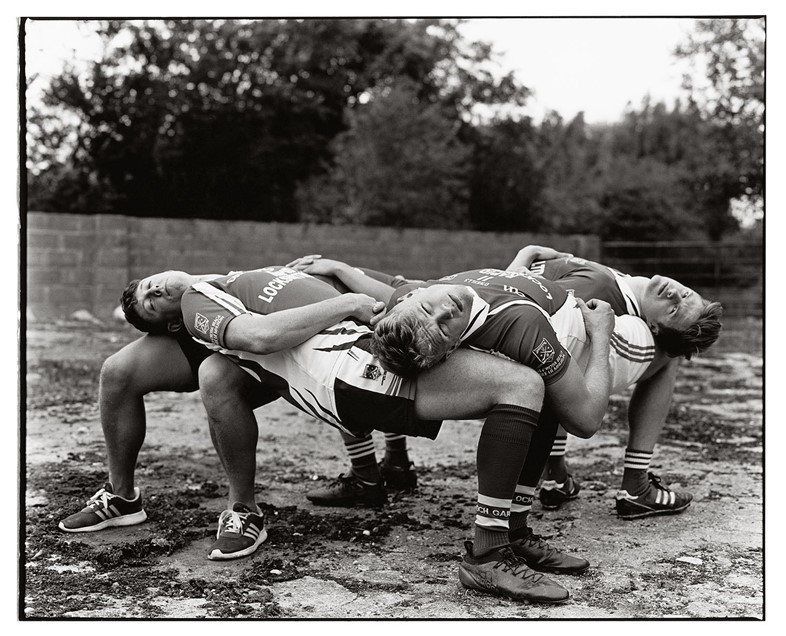
For Rodriguez, whose previous work and fashion photography has been typically colourful and full of movement – “I like embellishment, I like a certain sense of drama and costumes,” he says – the decision to shoot in black and white was almost made for him, on arriving at his Irish darkroom to find it was for black and white photography. Rodriguez learned how to work in the darkroom, having never before stepped foot in one. The black and white photographs he made meant the series took on a timeless quality he was hoping for. “I wanted the whole thing to feel as if it’s maybe a book that you might have just found somewhere like from the 1940s, but that the bodies are really contemporary,” he says. “I wanted it to feel a little bit lost in time.” As Rodriguez hones in on faces, body parts, vegetables and farming tools, the black and white palette allows for a compelling, unique view of the textures he encountered in Ireland – all adding to the series’ “chaos of closeness”.
People of the Mud is Rodriguez’ first photo book, and the level of care the photographer has taken over the book’s design and printing, developed with Loose Joints, matches his own obsession with books by photography masters like Richard Avedon and Irving Penn, the discovery of which – especially Avedon’s In the American West – inspired him to pursue image-making seriously. The self-taught photographer now counts one of today’s industry greats, Tim Walker, as a supporter and friend; Walker has even penned a beautiful, sparse poem for People of the Mud.
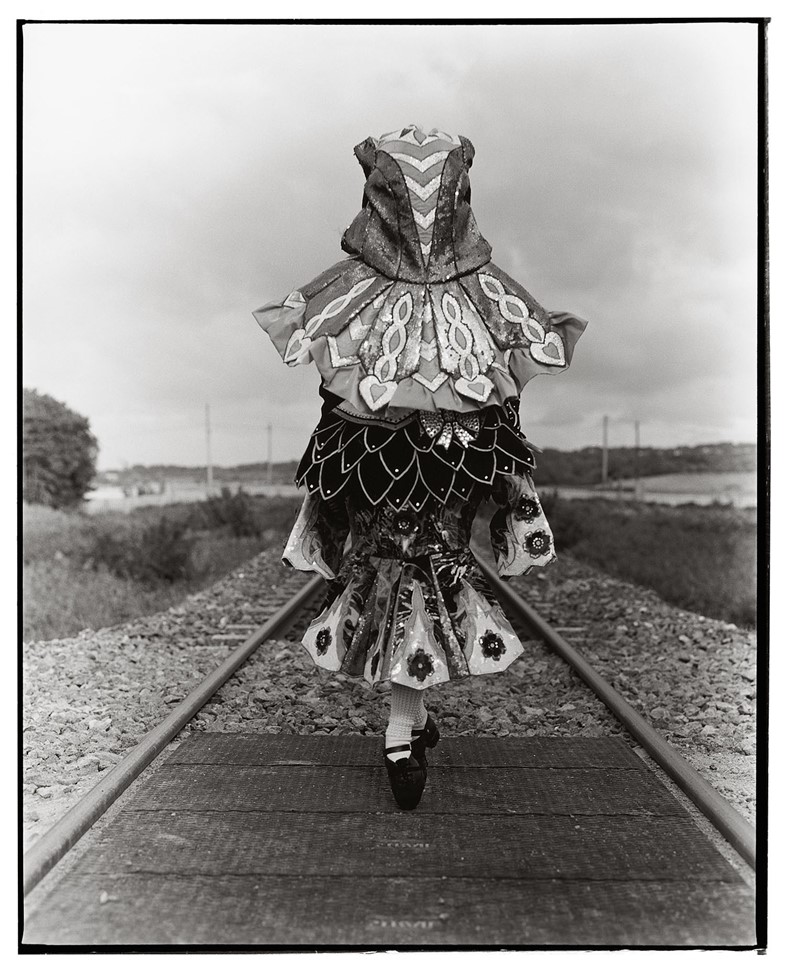
“I want to make it really clear that my interest is in people,” Rodriguez says. “My background is as a dancer, so the information that I have is the body and gestures, so I use that to direct the bodies and the people that I’m working with, but it can also be just somebody standing there. I wanted to get really close to these people.” The warmth that Rodriguez felt from the community in Wexford is reflected in the series, which he hopes conveys their “pride and dignity”. The book’s title ties into this, its roots in the original Viking name for County Wexford, Veisafjǫrðr or “inlet of mud flats”. “I took the idea of mud, which is always taking shape depending on who’s stepping on it and who’s been there,” he says. “The family that I stayed with had been farming there for 300 years and cultivating the land for future generations; everything was coming from the earth up. Think of Irish food, the games, the traditions – all these things were really coming from the roots of the land. And so ... these are the people of the mud, the people of Wexford.”
People of the Mud by Luis Alberto Rodriguez is out now, published by Loose Joints.
